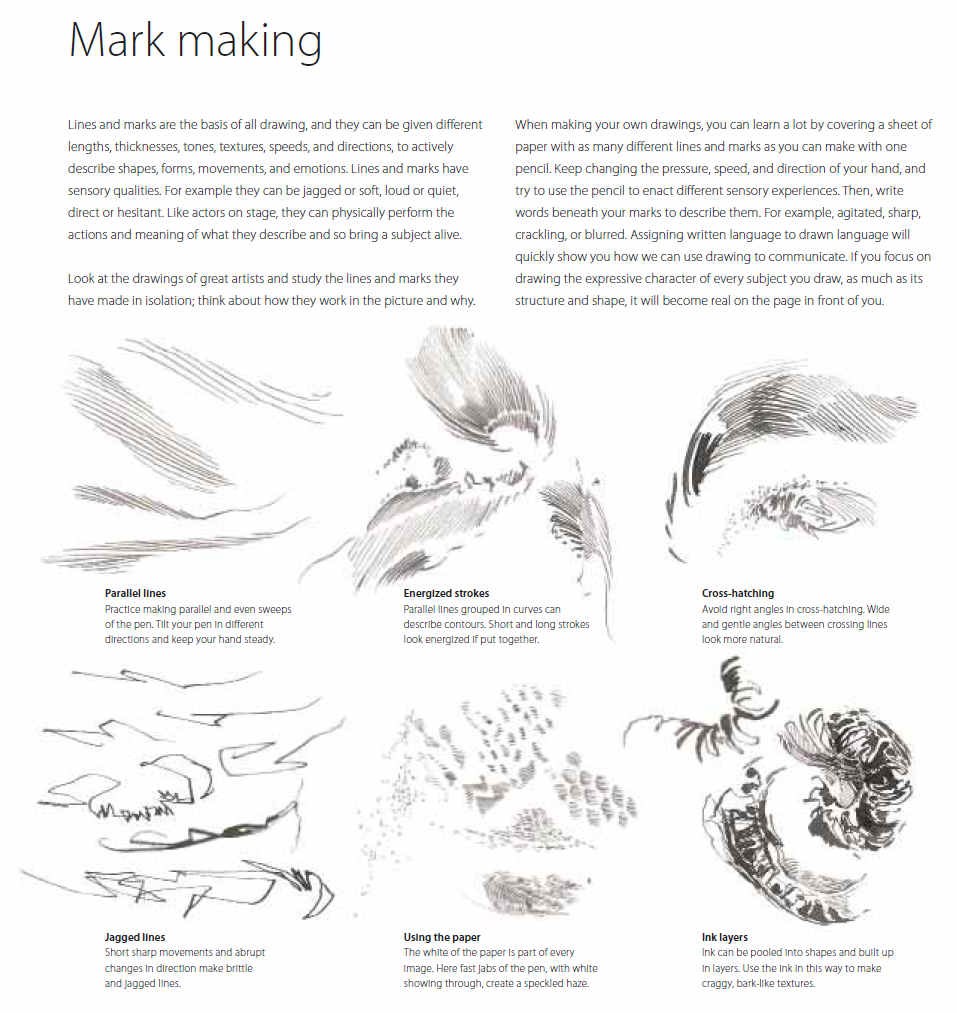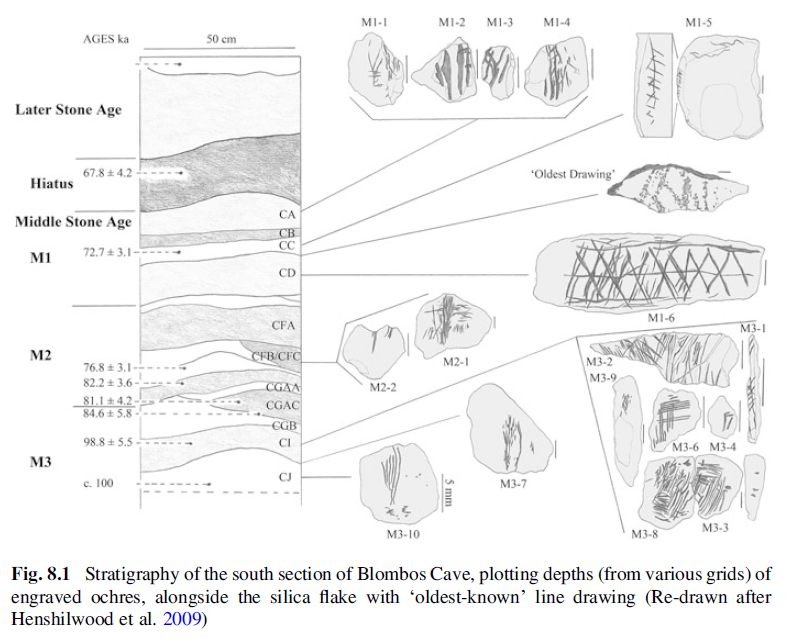Mark Making
This note is about forms of mark making.
In art: Mark Making Coursework Guide | Tate
‘Mark-making’ as a term is resurgent.
Used to refer to the signature-effect and totemic symbolization of painterly gestures in Abstract Expressionism.
More recently, refers to urban and subcultural graffiti, tags, tattoos and scarifi.
Thomas, Paul. Nanoart: The Immateriality of Art. Bristol: Intellect, 2013.

Simblet, Sarah. Botany for the Artist: An Inspirational Guide to Drawing Plants. New York: DK Pub, 2010.
Malafouris, Lambros. How Things Shape the Mind: A Theory of Material Engagement. Cambridge, MA: MIT Press, 2013.
Mealing, Stuart, ed. Computers and Art. 2nd ed. 1997. Reprint, Bristol: Intellect, 2002.

Quast, Paul E. ‘Re-Encountering Signs of Agency: Surveying the Appearance of “Layering” Patterns Within Our Interstellar Messaging Record as Representational Signs for Earth’. In Expanding Worldviews: Astrobiology, Big History and Cosmic Perspectives, edited by Ian Crawford, 58:107–46. Cham: Springer, 2021.
Hoy, Meredith Anne. From Point to Pixel: A Genealogy of Digital Aesthetics. Hanover: Dartmouth College Press, 2017.
"Humans are animals and like all animals we leave tracks as we walk: signs of passage made in snow, sand, mud, grass, dew, earth or moss. The language of hunting has a luminous word for such markmaking: ‘foil’. A creature’s ‘foil’ is its track. We easily forget that we are track-makers, though, because most of our journeys now occur on asphalt and concrete – and these are substances not easily impressed."
Macfarlane, Robert. The Old Ways: A Journey on Foot. London: Hamish Hamilton, 2012.
On contemporary aboriginal art, see a chapter in:
Manning, Erin. Relationscapes: Movement, Art, Philosophy. Technologies of Lived Abstraction. Cambridge, MA: MIT Press, 2009.
- Australian Aboriginal symbols are visual forms of knowledge.
- “Art” label devalues thousands of years of generational knowledge systems.
- Aboriginal creativity has little concern for aesthetical value.
Cameron, Elizabeth. ‘Is It Art or Knowledge? Deconstructing Australian Aboriginal Creative Making’. Arts 4, no. 2 (2015): 68–74. https://doi.org/10/gr83xc.
Purposes
- exploration, discovery
- making boundaries
- communication
- remembering
- taking care
References
Ingold, Tim. The Life of Lines. London: Routledge, 2015.
"We could take our cue here from the celebrated Creative Credo of Paul Klee. ‘Art’, Klee declared, ‘does not reproduce the visible but makes visible.’ Thus the painter does not project onto canvas forms that already exist as representations inside his head, but rather brings these forms into existence – or ‘grows’ them, as the gardener might grow a plant from its seed – in his very activity of mark-making, so that they are there to be seen. Perception is imaginative, then, in so far as it is enrolled in the generation of a world that is continually coming into being with and around the perceiver, in and through his or her own practices of movement, gesture and inscription."
See also his point about pencils being akin to music instruments, via Kandinsky. The pencil is transducer of the hand making a drawing. The transducer converts the kinetic quality of the gesture from the register of bodily movement and awareness to that of material flux. Cf. exploration of digital materiality 1 as the transduction of plant/animal traces.
Ingold, Tim. Imagining for Real: Essays on Creation, Attention and Correspondence. Abingdon: Routledge, 2022.
On mark making by animals.
Baker, Steve. Artist/Animal. Minneapolis: University of Minnesota Press, 2013.
Baker, Steve. Postmodern Animal. Essays in Art and Culture. London: Reaktion Books, 2000.
Davidson, Iain. ‘Marks, Pictures and Art: Their Contribution to Revolutions in Communication’. Journal of Archaeological Method and Theory 27, no. 3 (2020): 745–70. https://doi.org/10/gtqs3c.
Malafouris, Lambros. ‘Mark Making and Human Becoming’. Journal of Archaeological Method and Theory 28, no. 1 (2021): 95–119. https://doi.org/10/gk2whr.
Footnotes
Roudavski, Stanislav, and Gwyllim Jahn. ‘Activist Systems: Futuring With Living Models’. International Journal of Architectural Computing 14, no. 2 (2016): 182–96. https://doi.org/10.1177/1478077116638946.˄
Backlinks